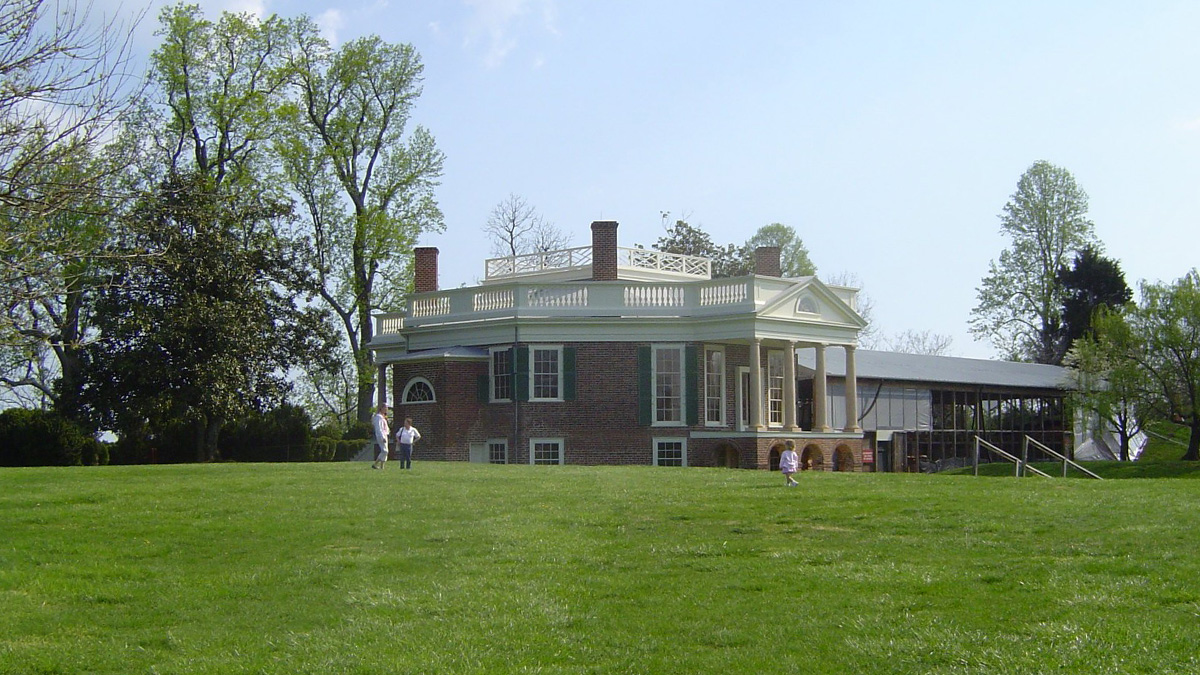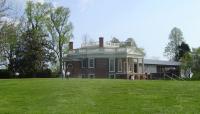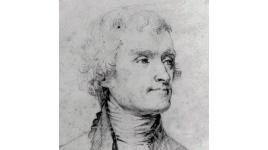Landscape Information
Thomas Jefferson’s private retreat, 90 miles south of Monticello, represents his vision of an estate combining a working plantation and an ornamental landscape, inspired by the Renaissance concept of the villa. After 1813, he visited Poplar Forest three or four times a year, staying as much as a month at a time. Although no drawings exist, recent archaeology has contributed to a greater understanding of this unique designed landscape. Jefferson organized the estate into a series of nested geometric shapes, with the outermost curtilage, roughly rectangular, enclosing 61 acres. Within that, a 10-acre, square, fenced garden embraced a circular garden of five acres whose circumference is traveled by a road and paper mulberry allée. At the very center, the Palladian-style house stretched east and west from its octagonal core, with willow-topped earthen mounds replacing traditional Palladian-style pavilions. Extending south from the house an allée of trees defined a sunken garden. On the north side of the house, a circular driveway circumnavigated a rose garden.
Beyond the outer curtilage stretched acres of working landscape including orchards, vegetable gardens, farm buildings, slave quarters, and fields for the cultivation of tobacco and wheat. These simple geometries gave Jefferson, the passionate gardener, a peaceful retreat within a productive agricultural landscape. Since 2010 the Garden Club of Virginia and landscape architect William Rieley have been working on the restoration of Jefferson's mulberry allée and other plantings. Poplar Forest was designated a National Historic Landmark in 1969.






